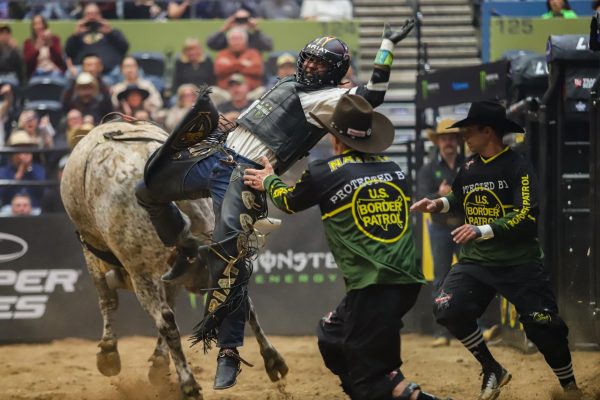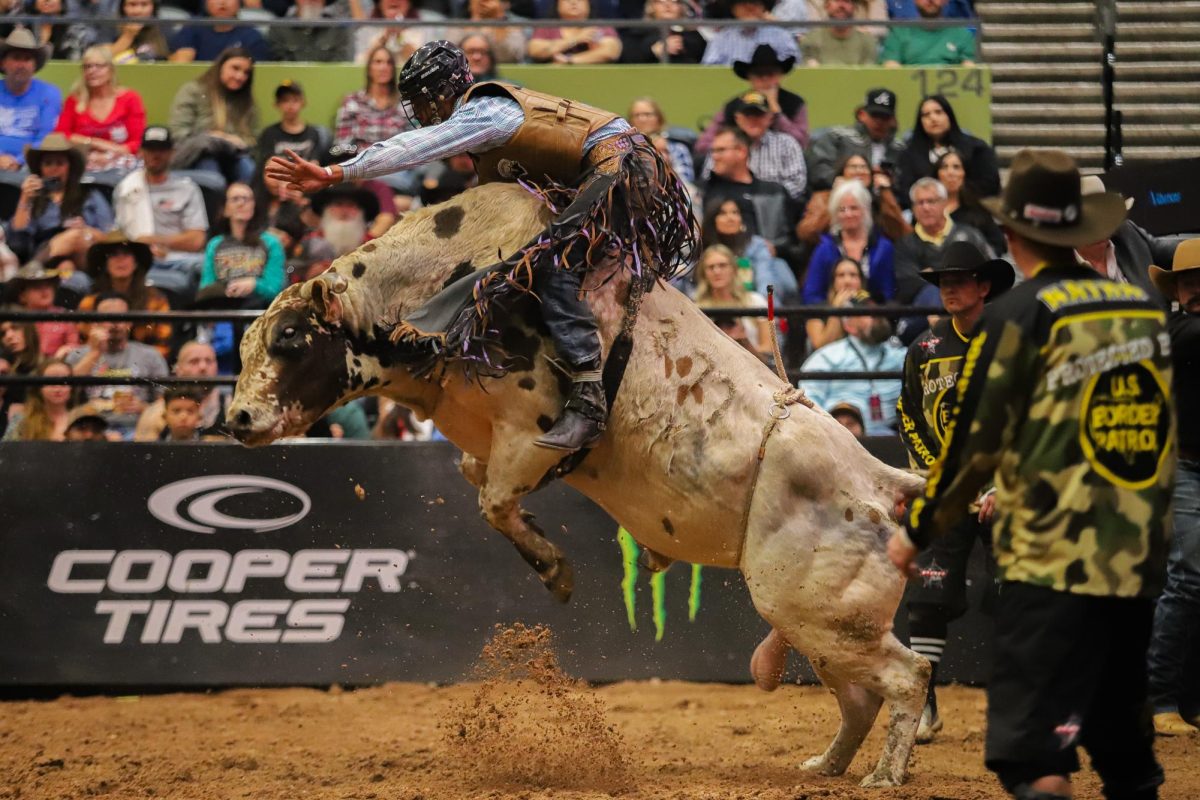Bull riding is a rodeo sport where a rider is mounted atop a bucking bull. The rider’s main focus is to stay on the bull for eight seconds, holding on with only one hand, the other remaining in the air. If you know anything about bull riding, the eight seconds on the bull can be the longest and most dangerous eight seconds in a rodeo sport.
The bucking bulls being used in this sport are more specifically bred for this sport. With this, they are more sensitive to negative stimuli like the rider’s weight and the flank strap, a fleece-lined strip of leather placed behind the animals’ rib cage. The flank strap is not tied to the animals’ genitals and it is not there to induce pain as many believe but rather to induce pressure to encourage the bulls to buck as hard and more frequently to get the rider off their back.
The more the bull bucks and the higher the angle of the buck, the more points a rider will get. The riders are only given points if they have a qualifying ride of eight seconds with no contact between the bull, equipment and the rider’s free hand.
This is all surface-level information about bull riding; many other rules are presented as conflicts are encountered.
The Daily Wildcat took a deeper look into what goes on in the minds of those who work with and in professional bull riding. Professional Bull Riders or PBR is an organization that hosts riders and bulls who compete to make it to the PBR World Finals to win a World Championship buckle and $1 million.
PBR started its 2024 Unleash the Beast individual competition season in Tucson on Nov. 10 and 11.
Andrew Alvidrez is a 27-year-old professional bull rider from Seminole, Texas. He has been riding professionally since 2018. It didn’t take Alvidrez much to decide to start his path toward professional bull riding.
“I watched a movie called ‘Eight Seconds’ at 3 years old and for some reason, this is all I’ve ever wanted to do,” Alvidrez said. “It was always bull riding. My advice throughout life was to make a living riding bulls because it’s really difficult to make a living at this sport. So when you go from bull riding on the weekends and going to the oil fields to work during the week, there’s a lot of trials and tribulations to get here, and I’m just thankful.”

(Mason Kumet)
The riders aren’t the only people on the dirt that face the bull. There are also bullfighters who you see on the dirt standing there as the rider is holding on waiting to protect the rider when they either get bucked off or dismount after a qualifying ride.
Cody Webster is a 32-year-old PBR bullfighter. He has been a bullfighter for over 20 years. For Webster there was never a question of bull riding or bullfighting, it was always bullfighting.
“I really enjoy the chemistry and the artistry,” he said. “It’s an animal that is stronger than you, faster than you and smarter than you […]. When you’re flying and you’re driving and you’re getting to motels, just life in general, it kind of becomes something you got to deal with on the road and that bull doesn’t have those issues. All he has to do is worry about eating, drinking and doing his job. So right now it comes down to the maneuver and at all costs keeping the guys safe.”
Typically, there is more than one person fighting on the dirt. Webster does his job along with Lucas Teodoro and Nathan Harp.
“It’s a fine art, all three guys have got to be a team player. If we’ve got one guy that’s trying to be a showboat or trying to be the hero of the night it’ll really mess up the chemistry and we have a really good team here on the UTB series,” Webster said.
Webster has suffered many injuries in his time as a bullfighter yet he still gets out on the dirt and protects the riders.
“I’m a professional athlete and cowboy protection is what I do year round but there’s always fear and different things to deal with but at the end of the day, I know that we’ve saved a lot of guys from really bad injuries or worse. So, when we tip our hat and get on that airplane tomorrow we know we left Tucson leaving it all on the dirt,” Webster said.
There is also a team of sports med personnel that take care of the athletes before, during and after the events.
Dave Edwards has been a sports med for the PBR for 14 years after he retired from the Diamondbacks team. He joined the PBR team after a friend invited him to work a few PBR events and then that turned into working almost every single event.
He said it was a big change from working with baseball athletes to working with bull riders.
“It’s totally different. The thing that most people don’t understand is you can continue to breed the bulls and make the bulls bigger, faster, stronger, but you don’t have the same luxury to breed the bull riders to be bigger, faster, stronger. It’s hard to describe and understand until you’re actually in it,” Edwards said.
The training and recovery for bull riders is drastically different than in most sports. They often don’t have much time to recover because they can be riding a bull every day of the week.
“This is a traumatic sport and to be honest with you, a lot of these guys aren’t recovered. These guys ride with a lot of injuries that most people wouldn’t even begin to participate. We have guys riding with broken ankles and broken hands. It’s just a matter of if they can do it then they can ride,” Edwards said.
Alvidrez explained how bull riding has slowly been evolving over time.
“It’s strength training, biometric training, agility training. It’s turning into a sport where it’s not just cowboys, we’re professional athletes. The breeding program’s getting better so we have to get better. I invest a lot of my money in personal trainers. I don’t know much about working out I just know how to work hard,” Alvidrez said.
Follow the Daily Wildcat on Instagram and Twitter/X





















